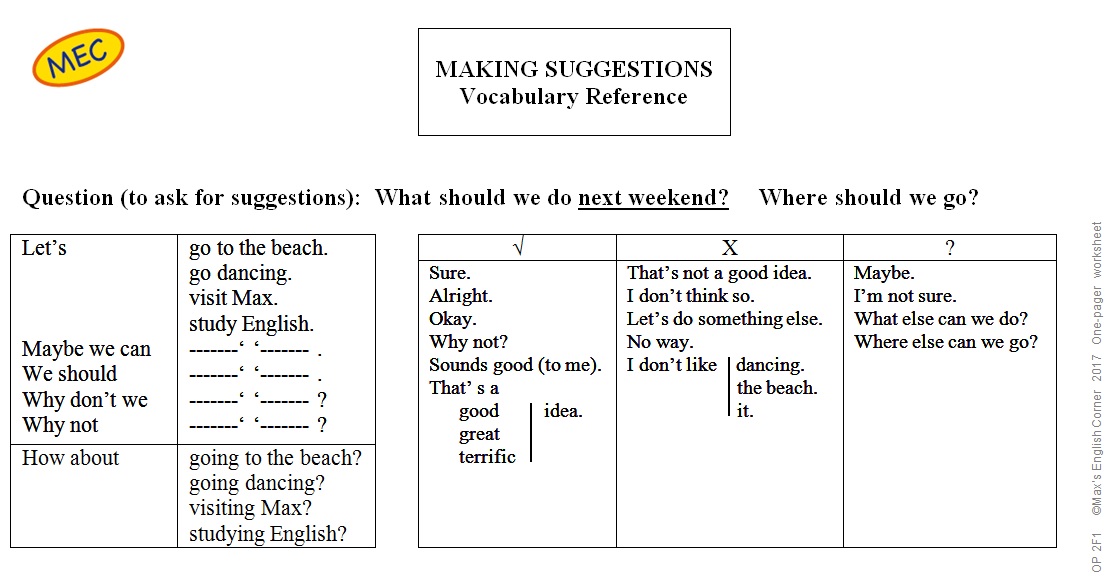Students learn and practice different ways to make and respond to suggestions
GENERAL AIMS
- To introduce different ways to make and respond to suggestions
- To have the students gain confidence in using these ways in their speaking through practice
RECOMMENDED LEVELS
Elementary / Pre-Intermediate
ACTIVITY TIME
40 minutes
FINAL WORDS:
Students like this presentation, finding it a bit fun to play around with as well as being useful as most functions are. It’s good to bring to the students’ attention:
●go is often followed by 2 possibilites in this context (Let’s go…)
►go + to + destination (the park, the beach, work, school)
►go + gerund (the name of the activity such as shopping or swimming)
●How about going dancing? Here two gerunds in a row are used and this is perfectly acceptable and normal.
●terrific = very good (and terrible = very bad as is awful) Neither terrific nor terrible should be confused with the meaning of terror.
●What else is very useful and try to encourage the students to use it
●Encourage the students to be familiar with and use the various ways of making suggestions and responding to them, not only in this class but whenever the opportunity might arise on future occasions
In Activity #4 students are told to give ideas (suggestions) to a friend in need and s/he responds to them. Point out that because the focus of attention is no longer ‘we’, there are a few minor but necessary changes. Let’s is not possible but the others are fine if ‘we’ is exchanged for ‘you’.
For example: Why don’t we you go to the gym? Maybe we you should see a dentist.



